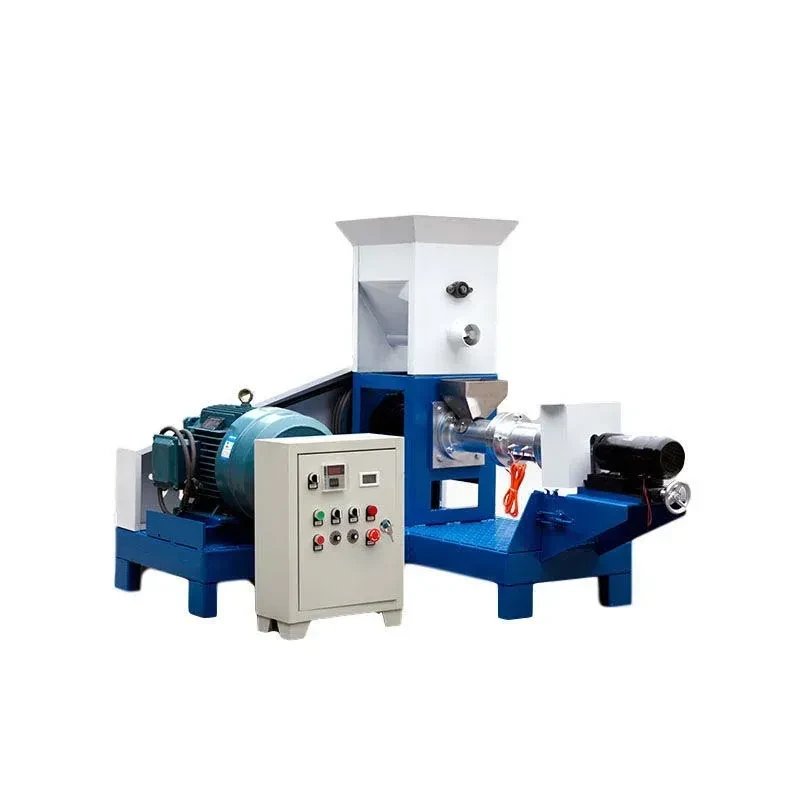Pelletizing Equipment for Efficient Animal Feed Production and Processing Solutions
តុលា . 12, 2024 00:24 Back to list
Pelletizing Equipment for Efficient Animal Feed Production and Processing Solutions
The Production of Animal Feed Pellet Making Machines
In recent years, the demand for high-quality animal feed has surged as the global population increases and the need for efficient livestock production rises. Animal feed pellet making machines have emerged as essential tools in the agricultural sector, offering an efficient way to produce nutritious and palatable feed for various livestock. These machines are designed to convert raw ingredients into pellets, ensuring that animals receive balanced nutrition while optimizing feed storage and handling.
Understanding Animal Feed Pellets
Animal feed pellets are compact, cylindrical forms of animal feed that are produced through a process of grinding, mixing, conditioning, and pelleting. The main advantage of using pellets is that they can enhance the digestibility of feed, making it easier for animals to consume and absorb essential nutrients. Pelleting also helps in reducing waste and ensures a more uniform distribution of nutrients. The pelleting process can vary depending on the type of livestock, the desired feed formulation, and the specific nutritional needs of the animals.
Components of a Pellet Making Machine
Animal feed pellet making machines consist of several key components a feeder, conditioner, pellet mill, cooler, and sometimes a grinder or crusher. The process begins with the raw materials, which may include grains, protein sources, vitamins, and minerals. The feeder allows for a consistent flow of these materials into the conditioner, where steam or moisture is added to soften the ingredients. This conditioning step is crucial, as it prepares the feed for the pelleting process by increasing its moisture content and enhancing the bioavailability of nutrients.
The heart of the system is the pellet mill, where the conditioned feed is compressed and extruded through a die to create pellets. The size and shape of the pellet can be adjusted by changing the die, allowing producers to cater to different livestock requirements, such as poultry, swine, cattle, and aquaculture. After the pellets are formed, they must be cooled to improve their durability and prevent spoilage. The cooling process typically involves air drying and can be facilitated by a cooler attached to the pellet mill.
Benefits of Using Pellet Making Machines
1. Efficiency in Production Pellet making machines significantly streamline the feed production process. They can produce large quantities of feed in a relatively short time, increasing productivity for manufacturers and farmers alike.
animal feed pellet making machines

2. Improved Feed Quality The pelleting process enhances the physical properties of the feed, making it more palatable and digestible for animals. This, in turn, promotes better feed conversion rates and overall animal health.
3. Reduced Feed Waste Pellets minimize dust and feed losses common in loose feed formulations. This helps in ensuring that a higher percentage of the feed reaches the animals, reducing overall feed costs.
4. Storage and Handling Convenience Pelleted feed is easier to store and transport compared to bulk feed. Its uniform shape allows for efficient stacking and storage, freeing up valuable space in feed storage facilities.
5. Customization Many pellet making machines allow for the easy formulation of custom blends tailored to the specific nutritional needs of different types of livestock. This adaptability is particularly beneficial in a diverse farming operation.
Challenges and Considerations
While animal feed pellet making machines offer numerous advantages, there are challenges to consider. The initial investment in equipment can be substantial, and producers must ensure they choose the right machine that aligns with their production scale and specific needs. Additionally, maintaining the quality of raw materials is critical for achieving high-quality pellets. Regular maintenance of the machines is essential to prevent breakdowns and ensure consistent production.
Conclusion
Animal feed pellet making machines play a vital role in modern agriculture, offering efficient solutions for the production of high-quality feed. By converting raw ingredients into nutritionally balanced pellets, these machines improve the overall efficiency of livestock farming, enhance animal health, and reduce waste. As the demand for sustainable and efficient food production continues to grow, the importance of feed pellet technology will undoubtedly remain at the forefront of agricultural innovations.
-
High Performance Exhaust Fan – Efficient Ventilation Solutions for Home
NewsJun.10,2025
-
High-Quality Gestation Pen for Sows Durable Mobile Pig Pen & Simple Pig Pen Solutions
NewsJun.10,2025
-
High Quality Rabbit Cage Double Tier Designs & Welded Wire Mesh Supplier
NewsJun.10,2025
-
Floating Fish Feed Machine - High Efficiency Floating Fish Feed Extruder for Small Scale Production
NewsJun.10,2025
-
Premium Poultry Housing Solutions Mobile & Commercial Free Range Options
NewsJun.10,2025
-
Industrial FRP Fans Corrosion-Resistant Blades & Centrifugal Systems
NewsJun.09,2025






